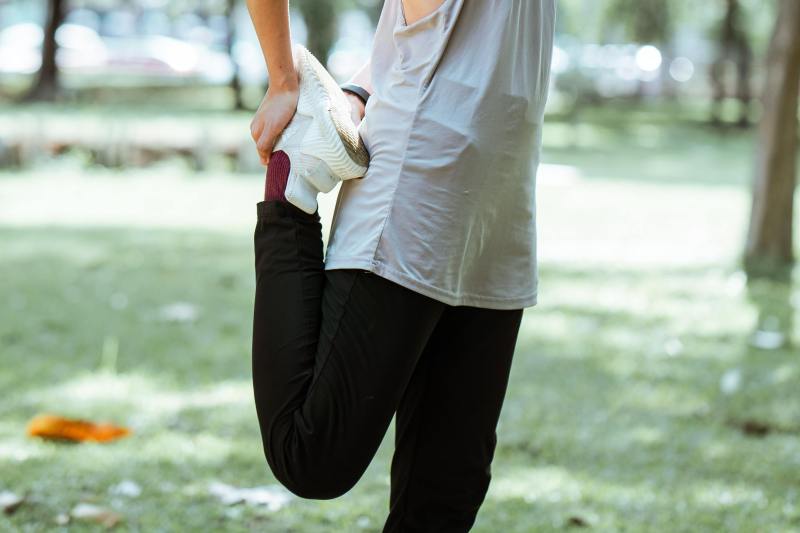Leg curls usually make the workout list when leg day comes around. The leg curl is a classic isolation exercise that predominantly targets the muscles in the back of your legs and helps improve your balance, strength, and stamina. It’s important you practice proper form to lower your risk of knee injuries. Here’s what you need to know to master the leg curl.
What are leg curls?

A leg curl or hamstring curl is a simple exercise that you can perform with or without a machine. It involves bending your knees to bring your heels toward your glutes while the rest of your body remains still. Leg curl machines are the most common way of performing leg curls, but there are several variations, including some you can try at home without a machine. Some people might need to avoid leg curls. For example, those who are recovering from an injury involving the spine, back, or neck.
What does the leg curl work?

As the name suggests, the hamstring leg curl primarily works your hamstring muscles in the backs of your thighs, which includes your biceps femoris, semimembranosus, and semitendinosus. This movement also works your glutes, quads, and calf muscles. You’ll also strengthen your “glute-ham tie-ins,” which are part of the muscles where your glutes connect to your hamstrings.
Are leg curls enough for hamstrings?

The leg curl is known to be an effective exercise for bulking up your hamstrings while avoiding putting too much stress on your lower back. No matter the muscle or muscle group you’re targeting, it’s always best to try at least a few different exercises for optimal results. Try to include rest days to give your hamstrings time to recover.
Do leg curls grow glutes?

Yes, leg curls do grow your glutes to a degree. Since the glutes aren’t the primary target of leg curls, it’s best to include other glute-building exercises in your workout routine, such as lunges, hip thrusts, and squats.
What are the benefits?

Leg curls help address muscle imbalances where one muscle or muscle group is weaker than another. In this case, the hamstrings are usually weaker than the quadriceps, and the quads often take over in many of the compound exercises. Leg curls are an isolation exercise that specifically engages your hamstrings. Your hamstrings help you bend and extend your legs, as well as walk, run, and jump.
Leg curls are known for boosting the strength, size, stability, and flexibility of your hamstring muscles, which are essential for overall balance, stamina, physical fitness, and stabilizing your knees. Research shows hamstring strength is associated with better sports performance and sprint-based movements and training.
Reduced stress on your lower back

As you lower your feet back down during the leg curl, you also engage your glutes, quads, and the tibialis anterior at the front of your shins. Conditioning these muscles in your lower body reduces your risk of injury and improves your ability to perform functional activities like household chores and playing with kids. Stronger hamstrings and glutes relieve some of the stress and pressure from your lower back and enhance your ability to perform other exercises like deadlifts.
How to do proper leg curls?

Here’s how to perform a lying leg curl:
- Adjust the machine to the best position for you and select the resistance.
- Lie face down, stretch your legs out straight, and place your ankles under the pad.
- Hold on to the handles for support.
- Try to keep your upper body and hips anchored flat on the bench.
- Bend your knees and lift your feet up and in toward your glutes.
- Hold the position for a moment before returning to the starting position.
- Repeat for your desired number of repetitions.
What are some leg curl variations?

Most gyms have the seated leg curl machine. Here are some of the most popular leg curl variations:
- The lying down leg curl involves lying down on a machine.
- With the seated leg curl, you sit on the machine with your torso at an angle.
- With the Nordic hamstring curl, you don’t need weights or a machine; you simply use your own body weight.
- The Swiss ball hamstring curl involves using a Swiss ball under your ankles. The movement of the ball works your abdominals as you try to keep your body stable.
- With the banded leg curl, you loop a resistance band around your ankles and secure the band to an anchor point.
What are the most common mistakes?

Here are some of the most common mistakes people make when performing leg curls:
- Placing the leg pad too high on your calves and not setting the machine to the correct position.
- Flexing and arching your back.
- Rushing too quickly through the movements.
Tips for safety and proper form

Here are some top tips for safety and proper form:
- Warm up and stretch your hamstrings and calves before working out.
- Keep the movement controlled throughout rather than focusing on speed.
- Try to avoid overtraining and start with a lighter weight. You can gradually work your way up over time as you master your form. Using weights that are too heavy puts stress on your knee joints.
- Your core, hips, and upper body should remain still throughout the exercise.
- Keep your core and glutes engaged, and avoid arching your back.
- Try to hold the curl for a moment before returning to the starting position.
Strong and stable legs are essential for carrying you around every day. Leg curls are worth adding to your workout routine to bulk up your leg muscles.




